V. – THE WELL OF SLAN.
So much for the first church of Glenavy and the saints whose sacred dust commingles with the soil of the parish where their lives were spent. Ancient records tell us of a holy well that sprang forth at the word of St. Patrick near the site of the church that he had founded. According to the Tripartite Life : ” In the same place he brought forth out of the earth a fountain which, from the numerous cures received by those who drank of its waters, was called Sian (healthful).” Father Colgan writes that there was no trace of this well in his day.
He mentions three miraculous wells in the Diocese of Connor frequented by pilgrims and by the people. One of these was in the parish of Schire (Skerry) Patrick, another in the parish of Creamchoill (Cranfield), and a third in the town of Connor.
V I – SARON AND CONNLA.
We are not certain who was King of Ulaidh at the time that Patrick was a swineherd on Sliav Mish. However, when he returned from the Continent, where he was preparing for the priesthood and for his apostolate to the Irish, the kingdom of Ulaidh had passed to the two sons of Caelbadh, Saron and Connla.
the Continent, where he was preparing for the priesthood and for his apostolate to the Irish, the kingdom of Ulaidh had passed to the two sons of Caelbadh, Saron and Connla.
We have already seen how Saron tried to thwart Patrick, and prevent him from founding a church in Glenavy. Connla, on the other hand, did not show the same hostility to the Apostle’s teaching. He was ashamed of his brother’s conduct, and offered Patrick lands for a church in his own territory. Accordingly, Patrick founded the Church of Cumar on the lands given him by Connla. This, according to some, was the origin of the famous Monastery of Muckamore (= the Plain of the Confluence). According to others, the reference is to Comber, in which place also there was an ancient monastery. Patrick blessed Connla, and promised that from him kings and chiefs of that province would be descended. The Catalogue of Kings of Uladh states that no less than eight of them were descended from this Connla. The race of Connla is represented by the Magennises of Iveaghin whose family the lordship of Iveagh was hereditary.

VII.–THE CREW HILL.
Its Historical Importance.
The subsequent history of Glenavy is closely connected with that of the Kingdom of Ulaidh or Ulidia. The Kings of Ulaidh were proclaimed on the Crew Hill, on the eastern side of the parish. The coronation-stone is still to be seen on the summit of the hill, but the “spreading tree,” under which the ceremony took place, and from which the place itself is named, vas cut down in 1099 by the Kinel-Owen, the hereditary enemies of the Ulidians. There is a large rath, which may have been the royal residence, on the south side, as you approach the top of the hill. On the summit there have been discovered some stone-lined graves belonging to the Pagan period. Nothing more remains to mark the scene where many a time the clansmen of Ulaidh gathered round their king from far and wide, to be drilled and marshalled for many a fierce encounter.
Then and Now.
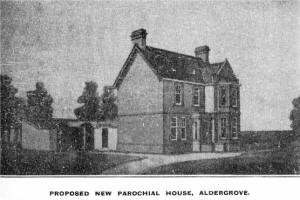 The hill itself rises to a height of 629 feet, and commands a view of the entire parish. From the top of the Crew the scene that lies before the visitor on a summer’s day is one not easily to be forgotten. On the west, Lough Neagh stretches away in the distance to where Sliav Gallion and the grey-blue hills of Derry and Tyrone are dimly visible. Ram’s Island, with its clump of trees reflected in the water, seems to float upon the placid surface of the lake ; while here and there a flying sail betrays the Lough Neagh fishermen. In the centre of a picturesque landscape, that lies between us and the shore of the lough, we notice Chapel Hill – an eminence crowned by the Parish Church and Parochial House. The sheltered homesteads of the farmers seem to be within easy reach of one another ; while at some little distance towards the north we see the village of Glenavy half-hidden amongst the trees. We turn towards the south, and the rich plains of Down are stretching out before us. Here and there are towns and villages nestling amongst the woods and by the streams. In the distance far south our view is bounded by the Mourne Mountains, that keep eternal sentinel along the Irish Sea. On the north, the fertile tract of country lying around Crumlin, Antrim, and Templepatrick meets our view, and on a clear day the hills of Mid-Antrim are outlined upon the horizon. The eastern side of the hill presents a contrast to the other three. Here one sees the bleak mountainous district of the Rock ;and Stoneyford, threaded by the lonely roads that lead from Glenavy to the busy city of Belfast. Truly, it was a site well-chosen – this ancient stronghold of the Kings of Uladh. The traveller to-day, as he gazes on the quiet country-side, with its fields of golden corn and verdant pasture-lands forgets that these fair plains were many a time and oft the scene of furious battles.
The hill itself rises to a height of 629 feet, and commands a view of the entire parish. From the top of the Crew the scene that lies before the visitor on a summer’s day is one not easily to be forgotten. On the west, Lough Neagh stretches away in the distance to where Sliav Gallion and the grey-blue hills of Derry and Tyrone are dimly visible. Ram’s Island, with its clump of trees reflected in the water, seems to float upon the placid surface of the lake ; while here and there a flying sail betrays the Lough Neagh fishermen. In the centre of a picturesque landscape, that lies between us and the shore of the lough, we notice Chapel Hill – an eminence crowned by the Parish Church and Parochial House. The sheltered homesteads of the farmers seem to be within easy reach of one another ; while at some little distance towards the north we see the village of Glenavy half-hidden amongst the trees. We turn towards the south, and the rich plains of Down are stretching out before us. Here and there are towns and villages nestling amongst the woods and by the streams. In the distance far south our view is bounded by the Mourne Mountains, that keep eternal sentinel along the Irish Sea. On the north, the fertile tract of country lying around Crumlin, Antrim, and Templepatrick meets our view, and on a clear day the hills of Mid-Antrim are outlined upon the horizon. The eastern side of the hill presents a contrast to the other three. Here one sees the bleak mountainous district of the Rock ;and Stoneyford, threaded by the lonely roads that lead from Glenavy to the busy city of Belfast. Truly, it was a site well-chosen – this ancient stronghold of the Kings of Uladh. The traveller to-day, as he gazes on the quiet country-side, with its fields of golden corn and verdant pasture-lands forgets that these fair plains were many a time and oft the scene of furious battles.
VIII.- THE KINGDOM OF ULAIDH.
The Fall of Emania.
The Crew Hill came into prominence in Irish history after the destruction of Emania, in 335 A.D. Up to that time Emania was the centre of royal power for the whole Province of Ulster. Its King, according to the Book of Rights, had the privilege of sitting by the side of the King of Erin, and held first place in his confidence. The Palace of Emania yielded in fame and magnificence only to the Palace of the High-King at Tara. At the dawn of history it had a storied past. It had been founded by Queen Macha of the Golden Hair three centuries before the Christian era. It reached its highest glory in the time of Conor Mac Nessa and his Red Branch Knights.
For six centuries, therefore, the King of Emania was Sovereign of all Ulster and sometimes also High-King of Ireland. But in the century before St. Patrick evil days came upon it. The three Collas made war upon the Ulster King, plundered his territory, and burned the palace, around which centred the romantic tales of the Red Branch Knights. The Ulidians were driven eastwards over Glenree, or the Newry River. They took their name with them into their circumscribed territory. From this time onward the term Ulidia, or Ulaidh, is applied to the tract of country lying to the east of Lough Neagh and the Newry River. Sometimes the Plain of Muirtheimhne, or North Louth, was included ; but indeed the boundaries of territories in those days were continually fluctuating, according to the power of each new sovereign to annex the territory of his neighbours.
The King of Uladh, then, who was crowned and proclaimed on the Crew Hill, had subject to him the Kings of Dalaradia, of Dalriada, of Dalmunia, of Dufferin, of the Ards, of Lecale, of Iveagh, and of several minor provinces.
Circumscribed Ulaidh.
It would take too long to follow the fortunes of the Kingdom of Uladh through all its chequered history. The law of succession was a fruitful source of strife at home. According to the Irish custom, the heir to the throne was not the eldest son, but the member of the royal family, or royal blood, who was adjudged most worthy. This gave a constant pretext to rival claimants. And the enemy abroad was ever on the watch. The Kinel-Owen were ready at all times to take advantage of Uladh’s difficulty or temporary weakness. Hence, as years went on, the King of Uladh, who had at first aspired to regain his lost sovereignty over Ulster, found himself at length unable to hold his power over his tributary kings and princes.
Battle of the Crew Hill.
One or two events cannot be passed over. The first is the Battle of the Crew Hill, in 1003 A.D., in which the Ulidians were defeated by their old enemies, the Kinel-Owen. From the account of the Four Masters, we see what enormous forces were engaged : ” In this battle were slain Eochy, son of Ardghair, King of Uladh, and Duftinne, his brother; the two sons of Eochy, Cuduiligh and Donal ; Garvey, lord of Iveagh ; Gillapadruig, son of Tumelty ; Kumiskey, son of Flahrey Dowling, son of Aedh ; Calhal, son of Etroch ; Conene, son of Murtagh ; and the most part of the Ulidians in like manner ; and the battle extended as far as Duneight and Druimbo. Donogh O’Linchey, lord of Dal-Araidhe and royal heir of Uladh, was slain on the following day by the Kinel-Owen. Aedh, son of Donal O’Neill, lord of Aileach and heir-apparent to the sovereignty of Ireland, fell in the heat of the conflict, in the fifteenth year of his reign and the twentieth year of his age.”
Brian Boru at the Crew Hill.
Two years later another important event occurred–the visit of Brian Boru to the Crew Hill. It was nine years before the Battle of Clontarf. Malachy, of the Southern Hy-Niall, had been deposed from the High-Kingship, and Brian acknowledged in his place by almost the whole of Ireland. The Kinel-Owen and the Kinel-Conall still sympathised with Malachy and his adherents. The King of the Kinel-Owen had fallen in the Battle of Crew Hill, and Brian thought the time opportune to march northward and secure the submission of the Ulster chieftains. The expedition arrived at the Crew Hill in 1005 A.D., and the Ulidians tendered their allegiance. The Wars of the Gael with the Gall describes the provisions supplied to the army of Brian while he was encamped there : “They supplied him there with twelve hundred beeves, twelve hundred hogs, and twelve hundred wethers ; and Brian bestowed twelve hundred horses upon them, besides gold and silver and clothing. For no purveyor of any of their towns departed from Brian without receiving a horse or some other gift.” But although Brian was well received by the Ulidians, he had to depart from Ulster again without receiving the submission of the Kinel-Owen or Kinel-Conall.
To be continued



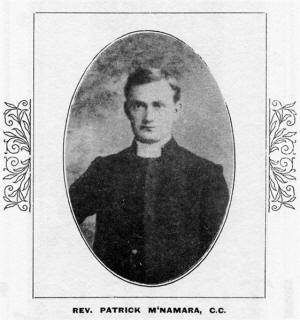
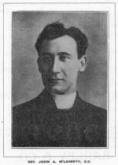
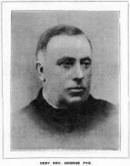


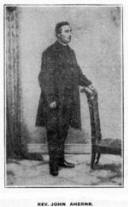

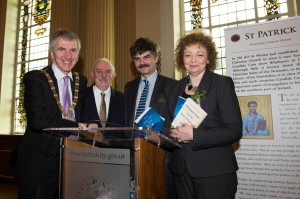



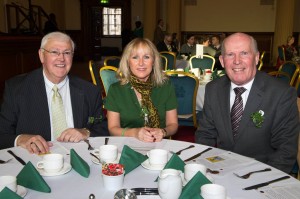

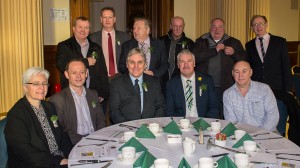
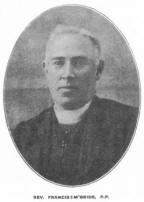
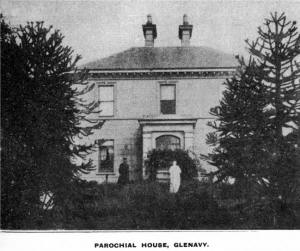
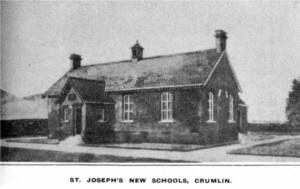
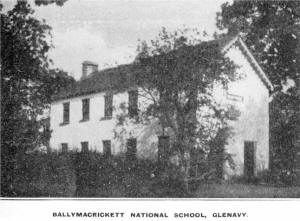





 Jimmy Ellis with fellow Northern Ireland actor James Nesbitt at the unveiling of a key stone on the site of the Lyric Theatre in Belfast in 2009
Jimmy Ellis with fellow Northern Ireland actor James Nesbitt at the unveiling of a key stone on the site of the Lyric Theatre in Belfast in 2009
 Jimmy Ellis (right) starred in Z-Cars from 1962 to 1978
Jimmy Ellis (right) starred in Z-Cars from 1962 to 1978
